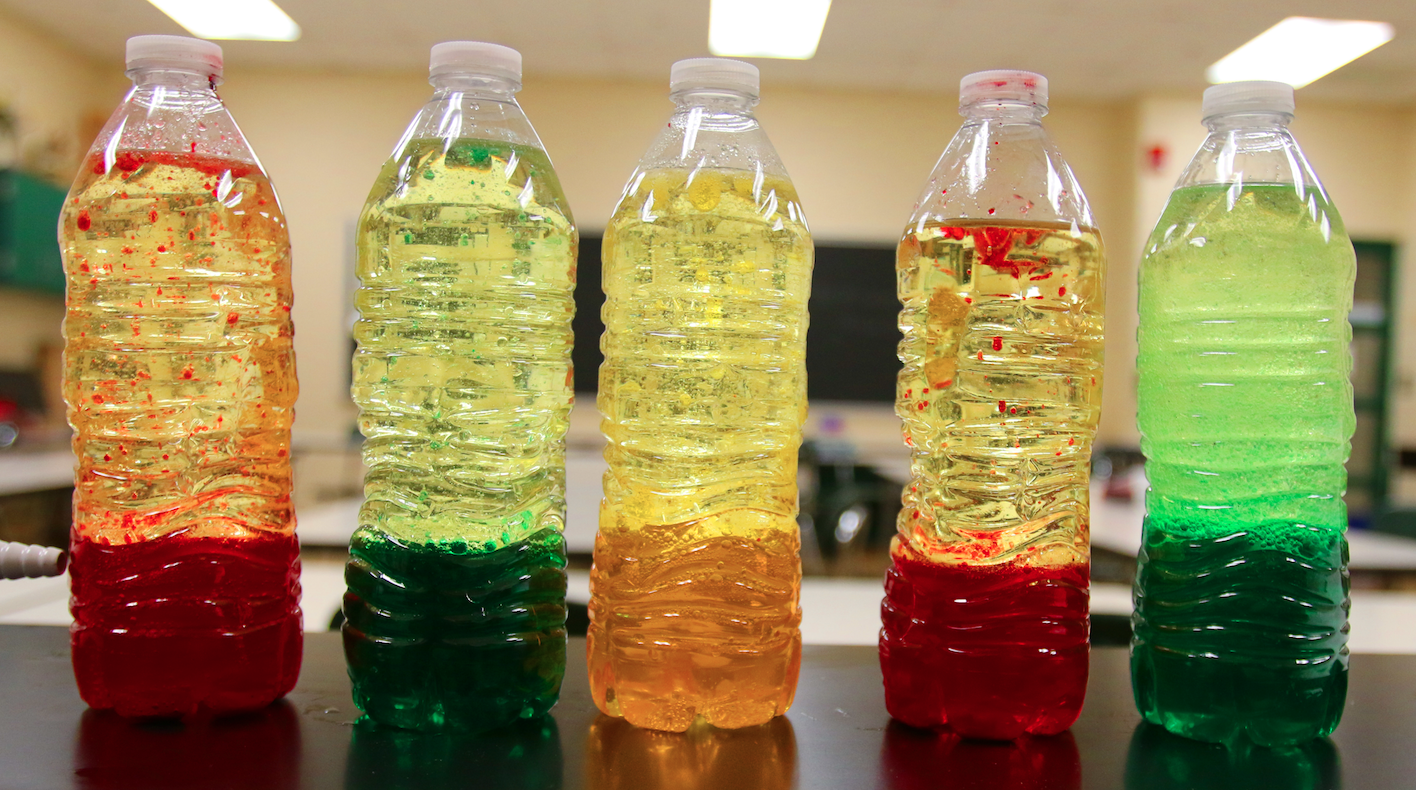Lava lamps a learning tool for Campbell students

CAMPBELL
Lava lamps were back in style Monday for a group of ninth-graders.
Chelsea Glosser, a third-year teacher at Campbell Memorial High School, and her ninth-grade STEM class spent the morning creating simple lava lamps to use as visual aids for their lesson on plate tectonics – the scientific theory detailing the movement of the plates that make up Earth’s outer layer.
The students’ lava lamps were different from the glass-and-wax novelty decor popular in the 1960s and 1970s; they used clear plastic bottles, vegetable oil, water and food coloring.
Once the bottles were prepared, the students dropped Alka-Seltzer tablets into the liquid, which created the iconic colorful bubbling that originally made the lava lamp popular.
“The lamps help provide a visual element to an abstract concept like convection currents in the Earth’s mantle. Obviously, we can’t go to the mantle, so we simulate the motion instead,” Glosser said. “It helps the students to remember the lesson long-term.”
The homemade lava lamps can be reused essentially indefinitely. Glosser has had her personal lamp for three years.
Monday wasn’t the classroom’s first foray into creating visual representations of abstract scientific concepts. Previous assignments, many with visual elements, lined the room, such as a globe and a diorama depicting the layers of Earth’s crust.
“The projects let the kids be creative, and it gives them their own voice,” Glosser said. “I told them as long as their projects dealt with plate tectonics, they could come up with whatever they wanted. I even had a student create a board game based on the lesson.”
With the lava lamps behind them, the students’ next project will involve designing their own roller coasters as a way to understand how energy transfer works.
The freedom to create as a part of the learning process seems to have paid off; the students were eager to fire up their lava lamps for the first time and after the class were quick to show off their creations to their friends outside the class.
“I saw one of my students talking with a friend after class, and the friend said, ‘Hey, where did you get to do that?” Glosser said. “It’s cool to hear students that aren’t in my class talk about the projects.”
 43
43
